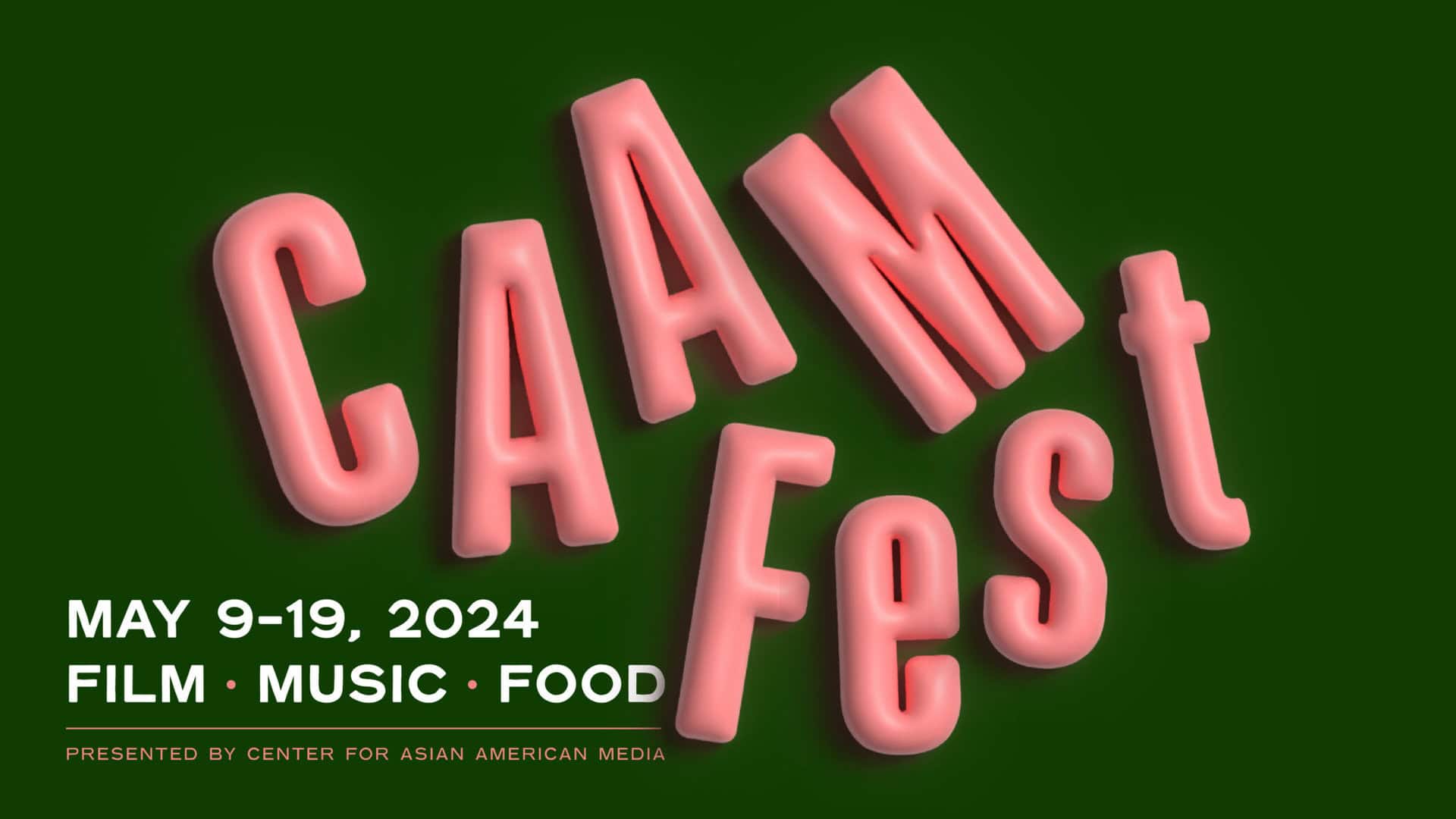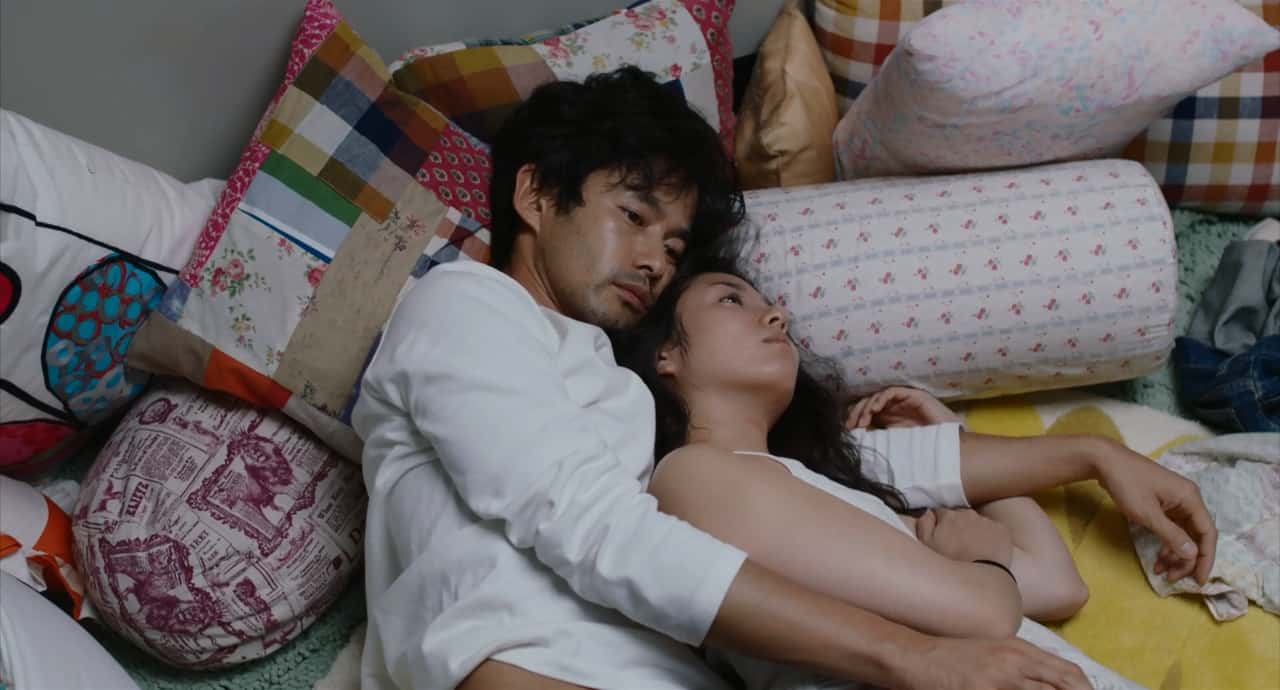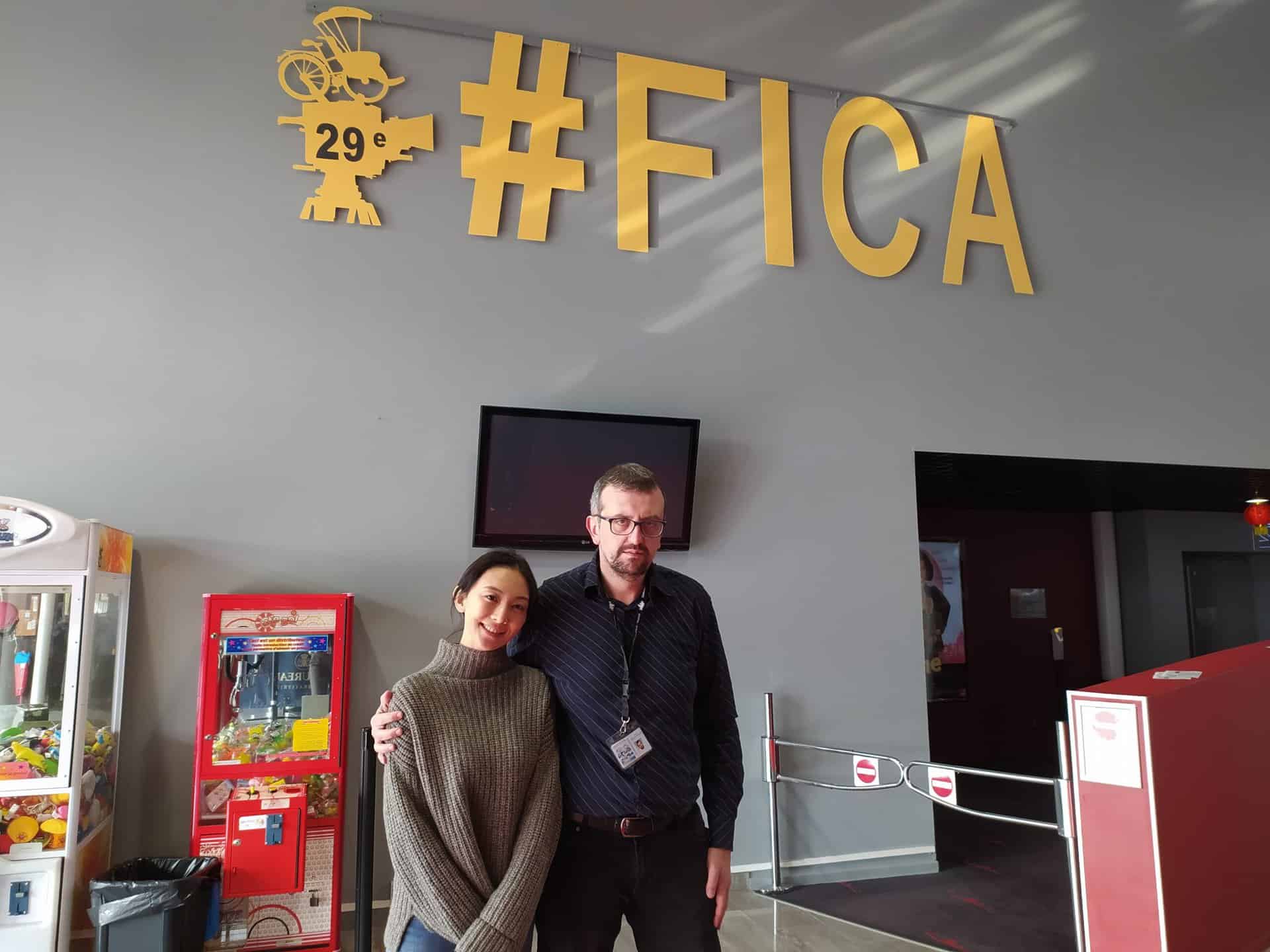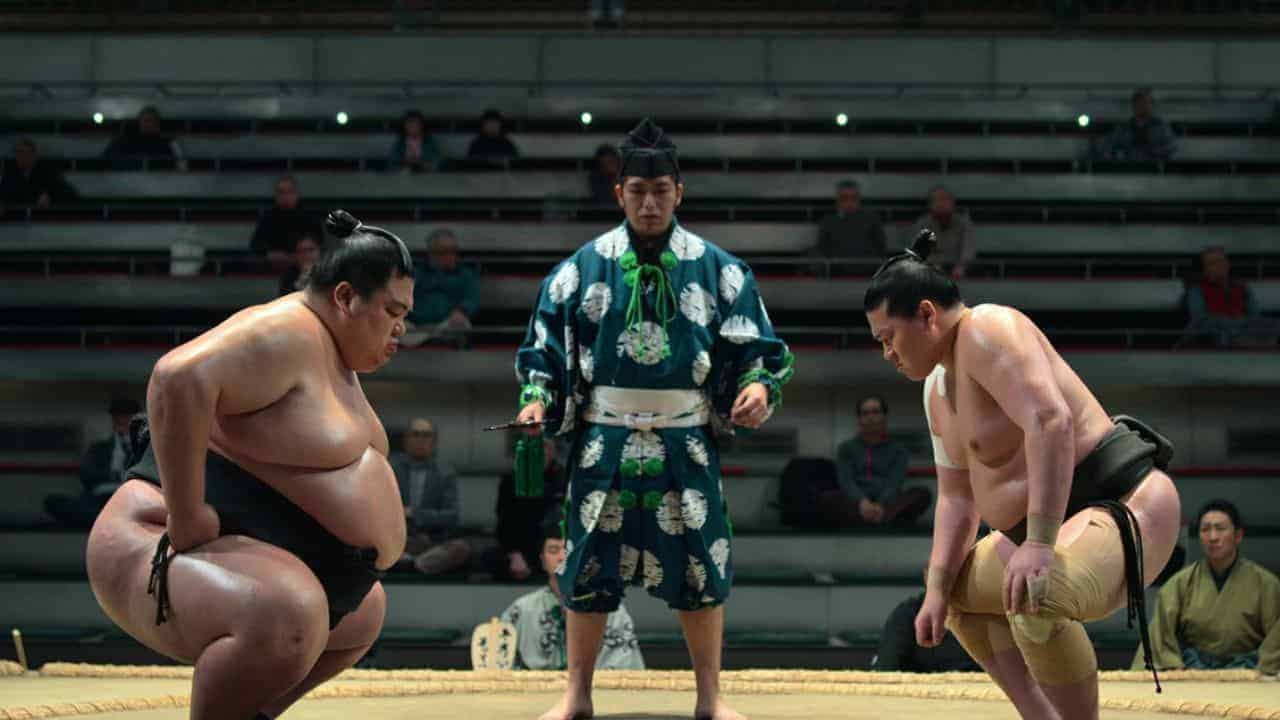One of the exciting parts to themed-film festivals is the discovery of new, local voices, like that of Julian Pham. Pham's first feature, “Owl,” speaks a story that is both Oakland-specific and universal to parent-child relationships. The narrative film follows locksmith Jean Kaneko (Marica Petrey), who returns home to take care of her ailing father. Coming home is not easy, however. As memories of her absent mother well up, her father's stubbornness ignite arguments, and her childhood friendships become entangled, she finds herself consistently frustrated – until she stumbles upon a windfall that could change all of their lives forever.
We spoke to director Julian Pham over Zoom in the advent of his world premiere at CAAMFest 2024. We talked about how to make a community out of nothing and marinating in open-ended relationships.

What inspired “Owl”?
Julian Pham: Marica, the lead actor and producer, and I were hanging out at this outdoor bar. I was really into film photography at the time, so I took a picture of her. When it came out, I thought it was really cool. I was inspired by what she could possibly be as an actress – as a “Girl with a Dragon Tattoo” or “Mr. Robot” kind of character. I brought this up to her, and she was interested.
Later on, she was hanging out with a locksmith friend of ours, and got inspired by that idea. She texted me about it. I felt this tingle up my spine. It's crazy to think about all these years and time and effort and money we put in it, just because I happened to take a photo.
Did you know Marica before?
Yeah, we've known each other for a very long time, even before this. We were both dancers, so we had met in dance class quite a while before that. We never would have thought we'd be making a film together.
Did some of your dance background come through in the blocking or character choreography?
Maybe a little bit, in unconscious ways. We were kind of constrained by the limits of the sets.
How did you find your locations? It seems like the specificity of Oakland had a lot to do with it.
It's 95% West Oakland; the other 5% is in some other areas in Alameda, where all the naval bases are. Then we went to a fair in 2018 that's near San Jose. We're proud of that.
Why West Oakland?
Mostly because we live there. We're so familiar with every nuance of the city. It was just one of those things that seemed to make the most sense.

What did your timeline look like? When did you take your first photograph of Marica?
2018. It took me about a year to work on the first draft. I guess it has been almost seven years. We had about four different phases of shooting, so we had a lot of reference photos. A lot of that continuity is really because of our hair and make-up people, and luck.
What about recruiting other actors? When I looked them up, it seemed like most of the cast were new to feature film.
A lot of them are Marica's friends from school. A few of the main actors were suggested to us by other people. A bulk of them are friends and family.
I find that one of the strengths of “Owl” is that you can find all these small intimacies and affinities between the actors.
I thought it would be a good idea for her to work with her friends and family because there is a comfort level that would show up in the film. The people that she brought on – especially Robert M. Lee, who plays her love interest in the movie – looked so great in the picture to me. There's also a little bit of convenience there – in an indie film, you have to do 10 different jobs.
10 different jobs?
We didn't really have a proper production designer, so I was doing a ton of that work from the beginning, with the help of other people. That was very hard for me. I did a lot of scheduling before shooting started. Then there's the management of finances; it's all my money, and that made everything a lot harder. Every little thing piles up, making it harder and harder. It was very stressful. But I'm very glad I had this experience – I wouldn't trade it for anything.
Everything was totally self-taught?
Yeah, leading up to this point. But some of the people we worked with were so experienced, like the cinematographer; he was such a mentor for me. One of our three producers, Denise Skinner, is also a seasoned veteran. She was very much a mentor for me in another way, with the nuts and bolts of filmmaking and getting the production through.
How did you meet them?
It's not a romantic story. The cinematographer, I just looked online and I loved his stuff. I called him and sent him the script, thinking he was kind of out of our league. But he really liked it. So we met for a beer, hung out for three hours, and really hit it off.
That is like a modern-day romance – finding people online and hitting it off. (laughs) You built a community out of nothing.
I found that very special – starting from nowhere and building community. A lot of that is through Marica and her resources and the people she knew.
Let's shift gears to the content of the film. When people make their first feature, typically they try to build off of what they already know. Were there any parts of you in the story?
The genesis of this film came from a photo, so it was a lot of building this plane as it flew. I really loved the process of discovering things as they progressed. It was a little more painful that way, but I appreciate that. The film is shaped by its collaborators – it's less of an auteur-y thing – and I think I really grew from that.
If anything, I would feel closest to Lilly, the mother featured in the archival footage. Her musings about life and perspectives and her alienation.
When did the owl come into the storytelling?
One of the original images that Joshua Drew Montgomery Williams put into the script was a little owl standing in a bowl of milk. I thought it was so beautiful. As we were trying to come up with the title, the owl just kept coming back to me. Marica came up with the idea of “Kaneko's Owl”, so that was our title for a long time. We actually ended up shaping the movie to include the owl more.
After a certain point, I felt that “Kaneko's Owl” wasn't working as a title because people weren't remembering it. Eventually we landed on “Owl,” which I feel comfortable with now. Now I think of [Jean] as an owl, even though that wasn't the intention.
To me, it seemed that the owl reflected the 360 vision that Jean eventually gains, as she is able to bring in a perspective and worldview in relation to her father.
That's great. (laughs) I love that it can elicit those multiple perspectives. I was also looking at the meaning of owls in different cultures. In Japanese culture, it seems like the owl relates to wealth and money in the modern sense, but in the ancient sense, it's more about death.
Check the review of “Owl”
There's also an entanglement between the home video footage and death, in an “Aftersun”-like manner.
We finished “Owl” before “Aftersun” came out. I think there are similarities, but I think there are a lot of differences in the way we use archival footage. For “Owl,” the archival footage is like a character in the film; it is the mother, her perspectives, and the way she sees the world. It is her inner monologue. Simultaneously, Jean is looking at all this footage, and she's interacting with the footage, too. It's more immediate than in “Aftersun,” where there's a parallel thing going on, where you're seeing the film in the present day, but also archival footage in the past, giving you simultaneous perspectives on the same relationship. In “Owl,” it's almost as if Marica can't let go of the archival footage in this film. She's just constantly watching it with this weird hope that the mom will come back in some kind of way. There's no clear ending for the character, and you don't see any kind of resolution as to where their relationship is going. It's open-ended in the end.
It's an interesting departure from Asian American film tropes, where we often see a family conflict get resolved by the end of the film.
For my own Asian experience, I don't think I've ever had a situation where we sat down and talked about a conflict and resolved it. We just moved on. As far as the film is concerned, I like things being open-ended.
Do you think you have closure with the project?
Yeah, I think I'm done. There was talk that maybe we should push it as a TV show. But I think it's time to move on. I learned a lot from it. It was great to meet the new collaborators; I learned so much. It was a very beautiful experience, but now it's time for different things.
What are you working on next?
I have a couple of scripts that I wrote during the height of the pandemic. So I'd love to make those work. It's a movie with a lot of dancing in it, and I think there's a bit of horror involved.













